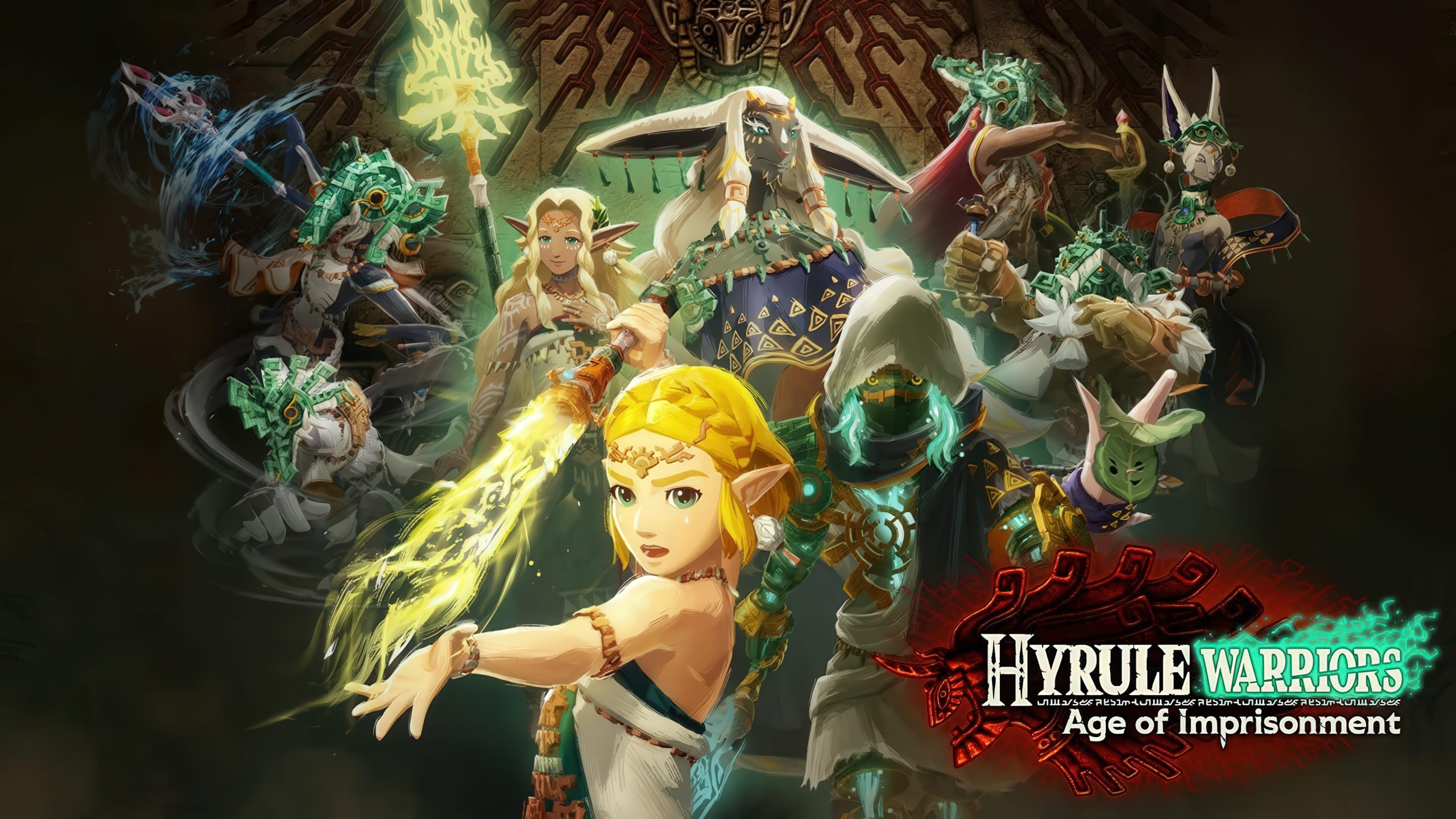Copyright Wccftech

Hyrule Warriors has grown from a spinoff to a full-fledged series in its own right relatively quickly, with the soon-to-be-released Hyrule Warriors: Age of Imprisonment being the third Zelda-themed Musou game to arrive in roughly a decade. Age of Imprisonment once again serves up a hearty helping of Dynasty-Warriors-style hack ‘n’ slash action while promising to fill in some key details of The Legend of Zelda: Tears of the Kingdom’s backstory. Is Hyrule Warriors: Age of Imprisonment a smashing good time? Or can you safely pass on this particular prequel? Time to wade into the fray. The previous entry in this series, Hyrule Warriors: Age of Calamity, also made lofty promises about filling in the backstory of The Legend of Zelda: Breath of the Wild, with some fans ultimately feeling disappointed when it turned out the game was really more of a reality-hopping multiverse tale than a simple prequel. Thankfully, those looking for a story that builds on The Legend of Zelda: Tears of the Kingdom in a more straightforward way will find Hyrule Warriors: Age of Imprisonment a much more traditional prequel. No alternate timeline shenanigans here. The events of Hyrule Warriors: Age of Imprisonment are set in motion when Zelda is sent hurtling back in time at the beginning of Tears of the Kingdom. Our time-displaced princess is soon discovered by Rauru and Sonia, the ancient King and Queen of Hyrule, who kindly take Zelda in while she tries to figure out this whole time travel thing. At the same time, our old friend Ganondorf is plotting, and while Zelda warns about the danger he’ll become, Rauru’s ego convinces him he can contain the villain, which results in (SPOILERS for something already revealed in Tears of the Kingdom) the loss of both Rauru’s kingdom and his wife. While this is happening, we also meet a pair of new characters: a Mysterious Construct who bears a striking resemblance to Link and his Korok sidekick, Calamo. As these things tend to go, an evil mirror construct brought to life by Ganondorf’s power has also been set loose on the world. While this Mystery Construct clearly serves the functional purpose of adding a Link-like fighter to a game without messing up the timeline, Age of Imprisonment actually manages to build some sense of mystery and drama surrounding this construct, and while I won't spoil it, the hows and whys of his existence actually make a decent amount of sense. Following this initial setup, we see Rauru, Zelda, and their allies, and the Mysterious Construct, Calamo, and their allies, battle Ganondorf’s forces on various fronts, both separately and together. This story is well-told through often meaty cutscenes, which don't shy away from the character-driven emotional beats that Breath of the Wild and Tears of the Kingdom largely avoided. Characters really only presented as archetypes in previous Zelda games are properly fleshed out here — I was particularly happy to see Ganondorf actually getting a legitimate turn as a villain in this game after being reduced to a vaguely-defined evil force in Breath of the Wild and spending most of his time hiding in a hole in Tears of the Kingdom. This all builds to one of the most satisfying finales to a Zelda game in quite some time. As for what happens between the cutscenes, those who played Age of Calamity, or really any of Koei Tecmo’s Warriors games (also referred to as “Musou” games by fans), will know what to expect here in broad terms. This is yet another Warriors-style hack ‘n’ slash with players mowing through literally thousands of Moblins, Lizalfos, and other pawns, as well as more challenging minibosses and bosses. That said, while Age of Imprisonment generally sticks to the Musou blueprint, some tweaks have been made to set this game apart. As in all Warriors games, players can pull off combos using the Y and X buttons, but this time around each character also gains access to various Unique Skills, which can be triggered instantly by pressing the R button in conjunction with one of the face buttons. Typically, each characters Uniques include anti-air, anti-rush, and shield-breaker attacks, which lends the game an additional small measure of strategy. Players can also now wield a variety of Zonai devices, many of which inflict some sort of elemental damage (fire, ice, electricity, etc.) which can be used to counteract enemies of the opposing type. Once unlocked, Zonai devices can be shared between multiple characters and their effects can interact with each other and other attacks, with, say, electricity and wind combining to create a lightning-charged cyclone. While you don't actually need to get too fancy with Zonai devices to win most battles, there are some interesting synergies that can be created with them. Ultimately, though, teamwork is the core focus of Age of Imprisonment’s combat. Past systems, like the Rune abilities from Age of Calamity, have been cut, with the new big moves that can change the course of a battle being Sync Strikes which see you and your teammates combine forces to unleash powerful and distinctive attacks. Sync Strikes are flashy and fun, and it’s really quite impressive that there are individual combo attacks for nearly every character combination in the game, considering the roster is nearly 30 fighters strong. Beyond the Sync Strikes, Age of Imprisonment just generally encourages frequent character switching. Unique Skills are on a cooldown timer, so it's often a good idea to switch characters on the fly if they happen to have, for instance, a needed anti-air attack ready to go (you also get big bonus damage if you change to another character at key moments). Of course, all of this can be done with a friend via local co-op with GameShare, allowing someone to join in on a second Switch (or even an original Switch), even if they don't own the game. While my ability to test out co-op was limited, performance felt much more consistent than Age of Calamity on Switch 1. Age of Imprisonment is an across-the-board technical step up from Age of Calamity, which often felt like it was pushing the Switch 1 to its breaking point (and beyond). While Age of Imprisonment isn’t always a looker from an artistic standpoint, it pushes a lot of stuff on screen (much more than Age of Calamity at its peak) and does so at a mostly-smooth 60fps, only faltering occasionally during particularly crowded, effects-laden battles. More aesthetically pleasing are the game’s many prerendered cutscenes (story bits regularly run for 10 minutes or more at a time), which are well-directed and appropriately flashy, although as best as I can tell, they seem to run at only 30fps, something that sticks out when they appear alongside 60fps gameplay. So, Age of Imprisonment’s combat feels and looks nice, which is a good thing, because you’re not going to derive much excitement from the game’s level design. If anything, things have been simplified this time around, with some of the basic exploration and puzzle elements found in Age of Calamity now gone. Most stages are just a series of narrow corridors connecting battle arenas together and mission design follows a very predictable formula -- smash enemies to free bases, set up camp there to heal your party, then move on until you face some sort of boss. Granted, said bosses can pose a fairly solid challenge and, much to my surprise, Age of Imprisonment also throws in some Star-Fox-style on-rails shooting segments that see the Mysterious Construct transform into a magic-powered jet to take down enemies. So, there is some variety here, but there's no denying that the game can feel somewhat one-dimensional at times. While I never had a bad time playing Age of Imprisonment, it was usually the story that was compelling me onward, rather than the gameplay. But hey, if you enjoy smashing things, Hyrule Warriors: Age of Imprisonment serves up a hell of a lot of things to smash. While the core campaign is perhaps a bit short by Warriors' standards, lasting around 12 to 15 hours, there's a lot of extra stuff to do (the mission selection map is littered with enough icons to make Ubisoft blush). Those looking to fit it all in may find themselves wishing for time travel powers of their own. This review was based on a copy of Hyrule Warriors: Age of Imprisonment provided by Nintendo. You can find additional information about our standard review process and ethics policy here. 8 WCCFTECH RATING Hyrule Warriors: Age of Imprisonment Hyrule Warriors: Age of Imprisonment does a lot to address the story and technical shortcomings that held back its predecessors while making some modest yet welcome tweaks to the series’ combat. Age of Imprisonment remains relatively shallow compared to core Zelda games, but that’s largely inherent to the Musou genre, and those happy to bliss out while bashing Bokoblins will find a well-told tale worth tussling with long term. Pros Absorbing canon story for Zelda fans Teamwork-focused combat is engaging Better tech than its predecessors Tons for completionists to do Nice music and voice work Star-Fox-style missions a surprise Cons Mission design can be repetitive 30fps cutscenes and the rare FPS hiccup Core campaign short by Warriors standards Buy for $69.00 from Amazon The links above are affiliate links. As an Amazon Associate, Wccftech.com may earn from qualifying purchases.



